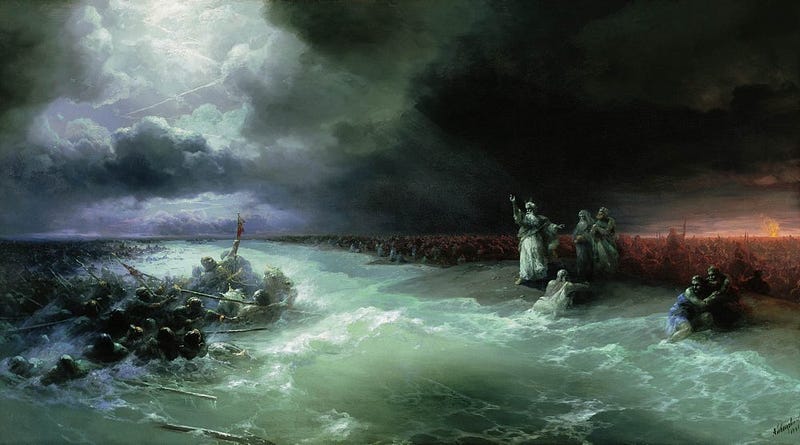Exploring Scientific Explanations for the Parting of the Red Sea
Written on
Chapter 1: A Natural Phenomenon Unveiled
On September 10, 2017, an unusual event took place in Tampa Bay, Florida. For several hours, the bay’s water receded dramatically, unveiling large portions of the seafloor to the air. Residents were astonished; such a sight was unprecedented and likely to remain a once-in-a-lifetime experience. Authorities cautioned the public to exercise caution and avoid the area, as the phenomenon was transient. The water would return swiftly, propelled by the forceful winds from an approaching hurricane that had displaced it.
This occurrence, known as wind setdown, is a rare event typically associated with severe storm systems or significant wind patterns. Similar water drainage was noted in shallow coastal areas near Caribbean islands.

New scientific models suggest that such a formidable wind setdown could explain the biblical account of Moses parting the Red Sea, enabling the Israelites to traverse the ocean floor.
Section 1.1: The Biblical Account
In the book of Exodus, the narrative explicitly mentions wind as a key factor in this event. Exodus 14:21–22 states:
“Then Moses stretched out his hand over the sea, and all that night the Lord drove the sea back with a strong east wind and turned it into dry land. The waters were divided, and the Israelites went through the sea on dry ground, with a wall of water on their right and on their left.”
This description bears a striking resemblance to the meteorological phenomenon that occurred in Tampa Bay. The text mentions the appearance of dry land, facilitating the Israelites’ passage. While some may find this hard to believe, it aligns closely with the experiences of those who walked across the dry bay in 2017.
Subsection 1.1.1: Scientific Modeling and Variables
Carl Drews, a researcher at the University of Colorado Boulder, explored this hypothesis for his thesis. He proposed that the parting of the Red Sea was a naturally occurring event influenced by specific weather conditions. Drews conducted numerous simulations, adjusting variables until he observed significant reductions in water levels. The optimal conditions suggested the Israelites likely crossed shallow marshy tributaries rather than the expansive Red Sea.
Interestingly, the Hebrew term for the Red Sea is often translated as the Sea of Reeds, with no precise specifications regarding its size or location. Drews interpreted this ambiguity to mean that any body of water in the region could be considered the Sea of Reeds and adjusted his simulations accordingly.
The biblical narrative also describes the rapid return of water following the calming of the winds, which could have caught pursuing Egyptians in a swift deluge, leading to confusion and drowning. The biblical account precisely details the necessary conditions for the formation of a land bridge: a prolonged strong east wind.
Chapter 2: Scientific Perspectives on the Event
The first video titled "Scientists FINALLY Found Evidence For The Red Sea Crossing" explores the scientific rationale behind this phenomenon, shedding light on how natural occurrences may align with ancient texts.
The second video, "The Truth Behind Parting The Red Sea | Ancient Mysteries | National Geographic UK," delves deeper into the historical and scientific discourse surrounding this extraordinary event.
In conclusion, what has long been viewed as a miraculous event may indeed have natural explanations rooted in meteorological phenomena, requiring only the right timing for the Israelites to cross safely.